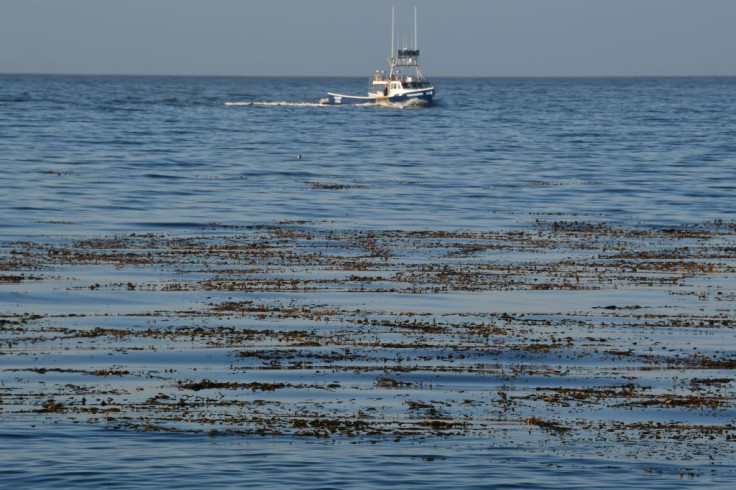Japanese 'Tsunami Fish' Found In California 7 Years After Disaster Claimed 29,000 Lives

Japan's massive 2011 tsunami, the aftermath of a 9.1 earthquake, left devastation in its wake, claiming the lives of 29,000 people and resulting in an estimated $235 billion in damages. Seven years later, the effects of the deadliest natural disaster in history can still be felt today.
Aside from the population of the country, the 2011 Japan tsunami also disturbed and upended a great number of marine life surrounding the country's islands. One of the affected sea creatures is the barred knifejaw fish, which was recently found 5,000 miles away from its native home of Japan.
According to CNN, divers recently found the barred knifejaw swimming in Monterey Bay, California. The fish, which has a zebra-life appearance due to its black and white stripes, likely emigrated halfway across the world due to the 2011 natural disasters as it has been seen several times in the area. The barred knifejaw, or the Oplegnathus fasciatus, is extremely valuable in Japan both for food and as a game fish.
Nicholas Ta, a diver who has been the area nearly every day for five years now, said that the knifejaw could not be mistaken for another local fish. He told CNN that other fish in the bay are camouflaged and match the environment around them.
Researchers revealed in a 2017 study that 289 species were displaced in the six years that followed the 2011 East Japan earthquake and tsunami.
"Most of this dispersal occurred on nonbiodegradable objects, resulting in the longest documented transoceanic survival and dispersal of coastal species by rafting," the abstract of the study published in the journal Science read.
"Expanding shoreline infrastructure has increased global sources of plastic materials available for biotic colonization and also interacts with climate change–induced storms of increasing severity to eject debris into the oceans. In turn, increased ocean rafting may intensify species invasions."
The United States Geological Survey (USGS) supported the findings, writing that the species were likely transported to the area by means of "rafting on tsunami debris."
The first barred knifejaw was first seen in California in December 2014. However, at the time, Ta did not recognize it. It was only after his friend Dennis Lewis helped him identify the species and asked him to be on the lookout for the future that he realized the significance of his discovery.
The USGS added that they are still unsure about the impact of the knifejaw in the California waters as no studies have been done to find out their effects on the ecosystems they invaded.
© Copyright IBTimes 2024. All rights reserved.





















